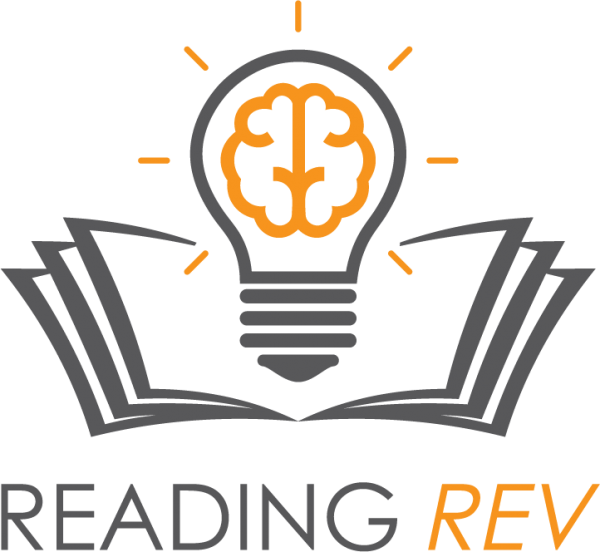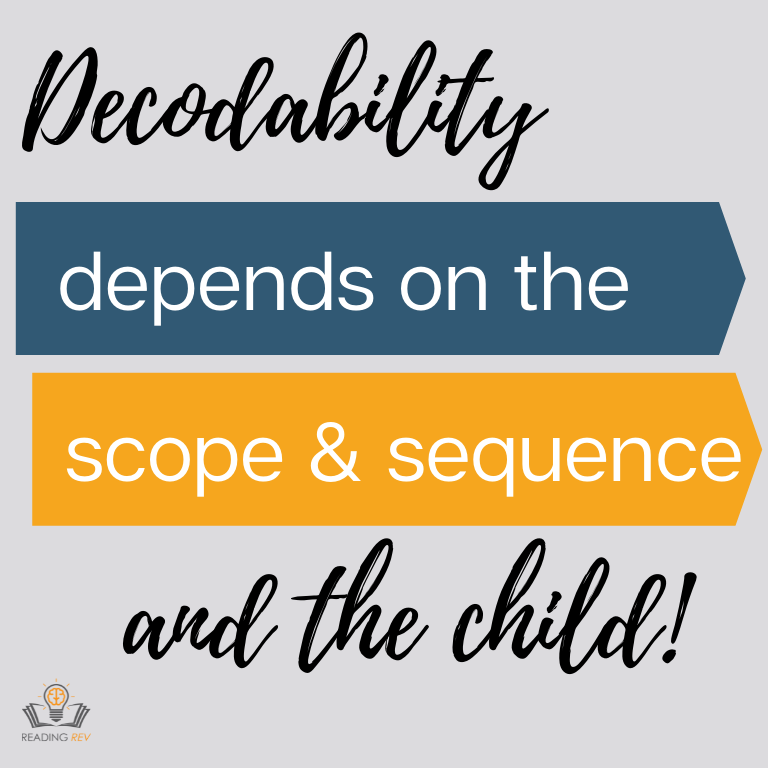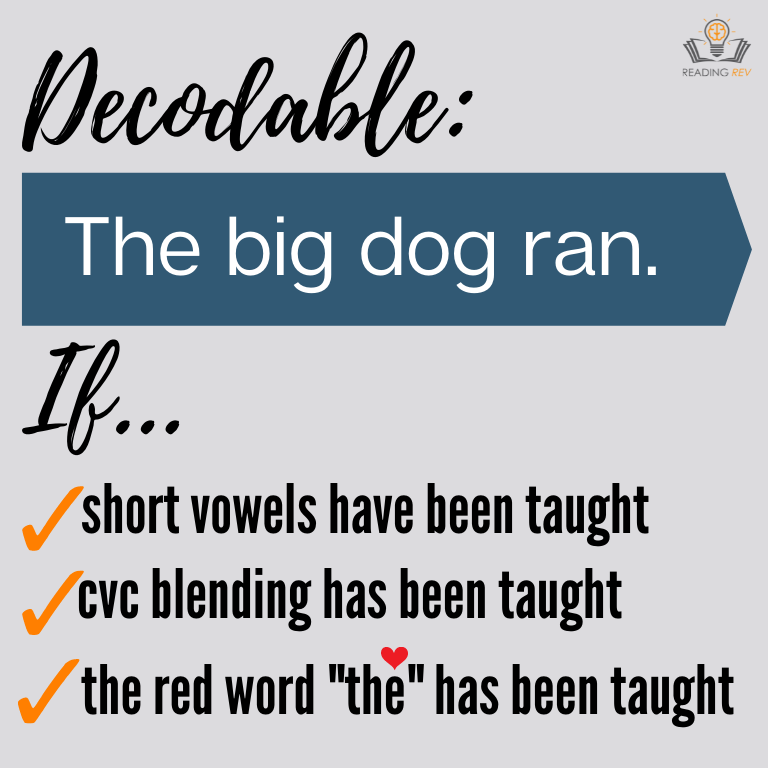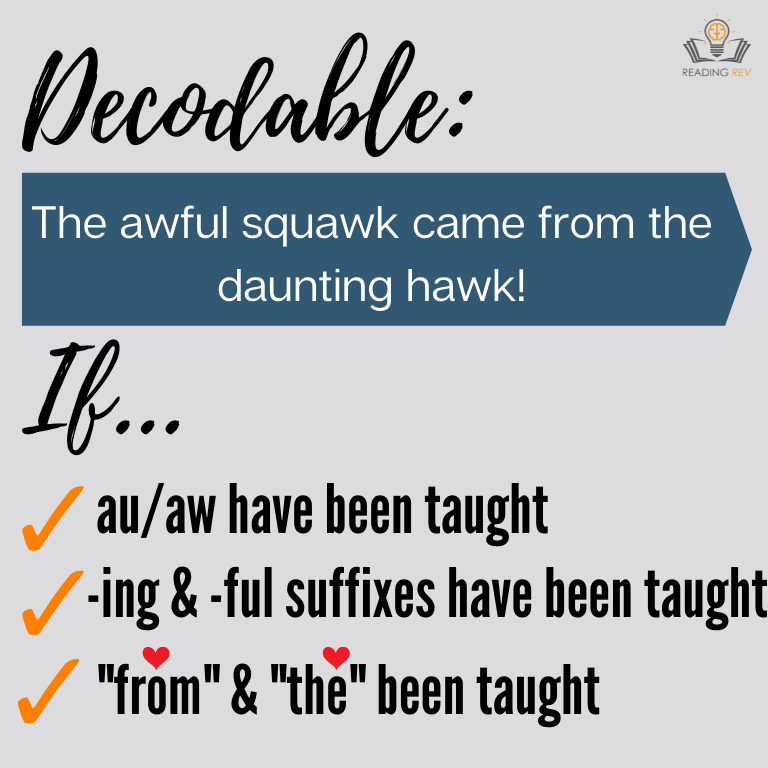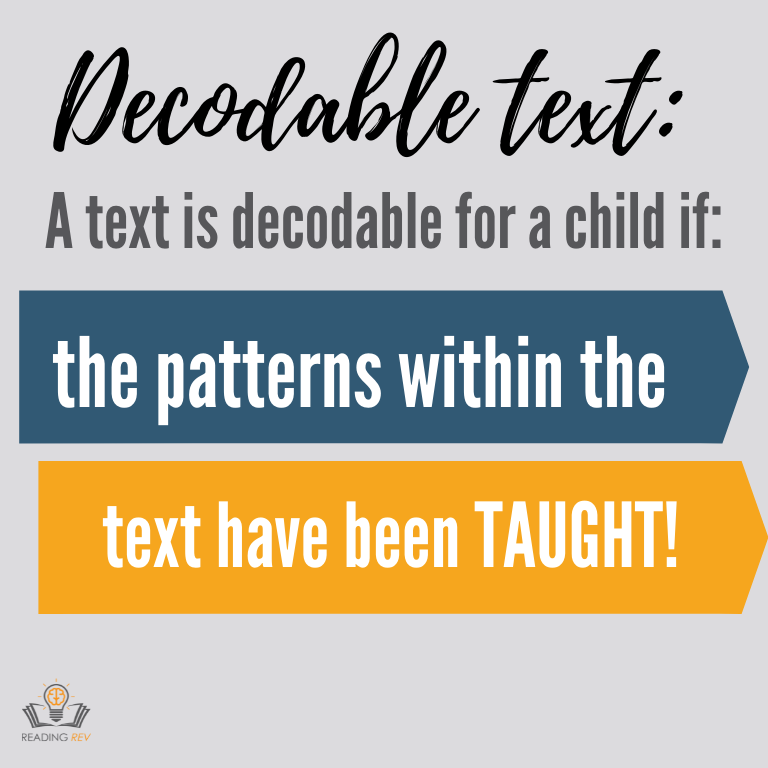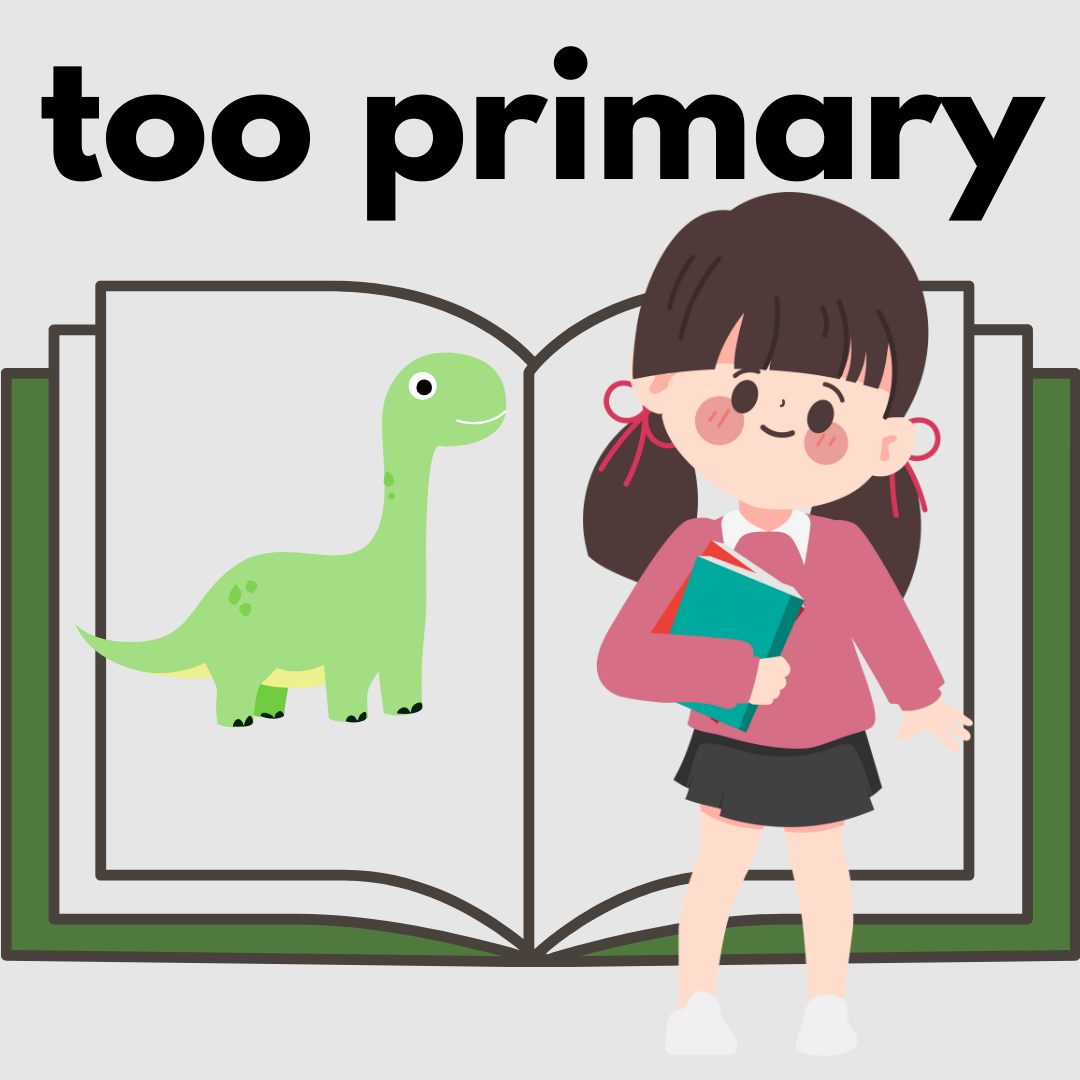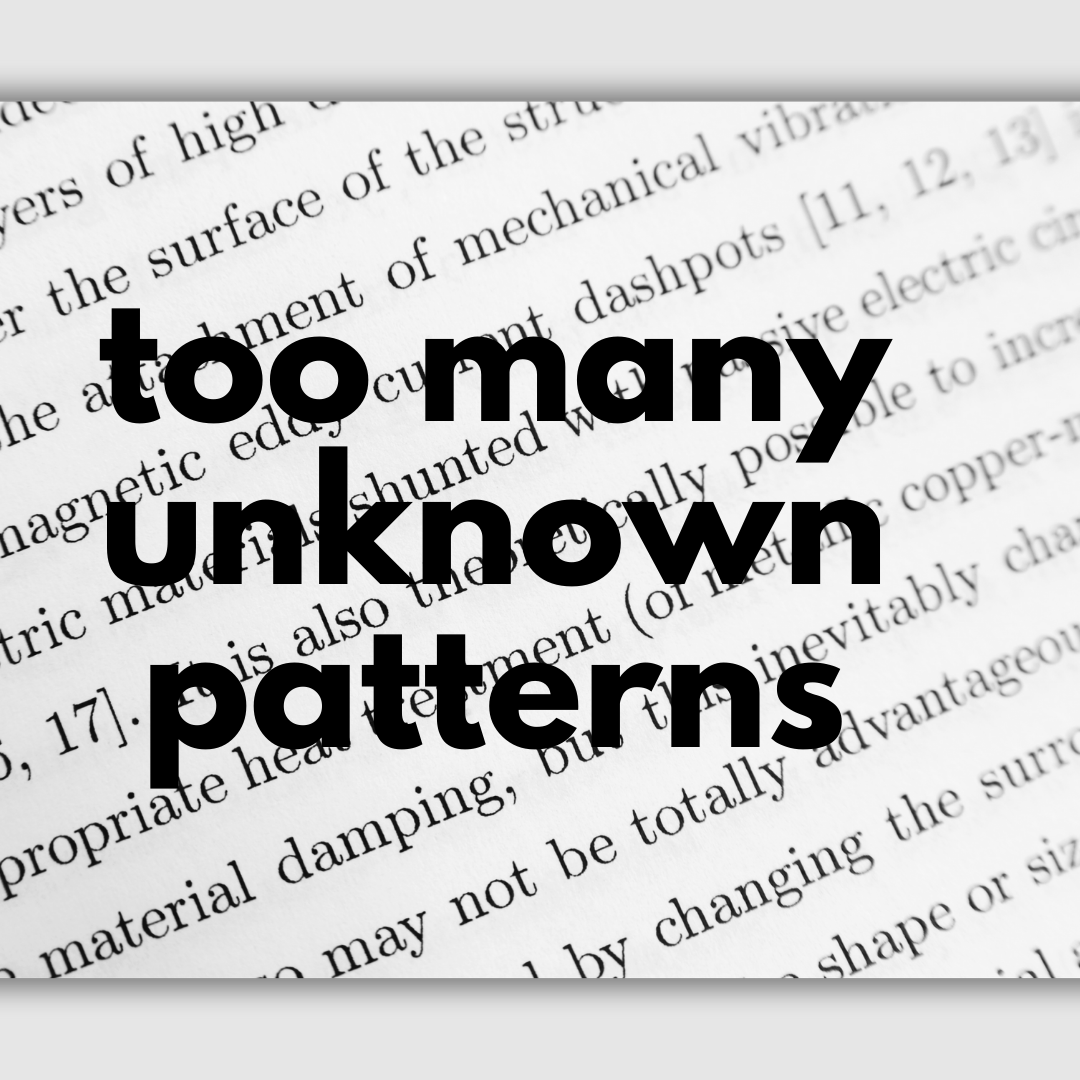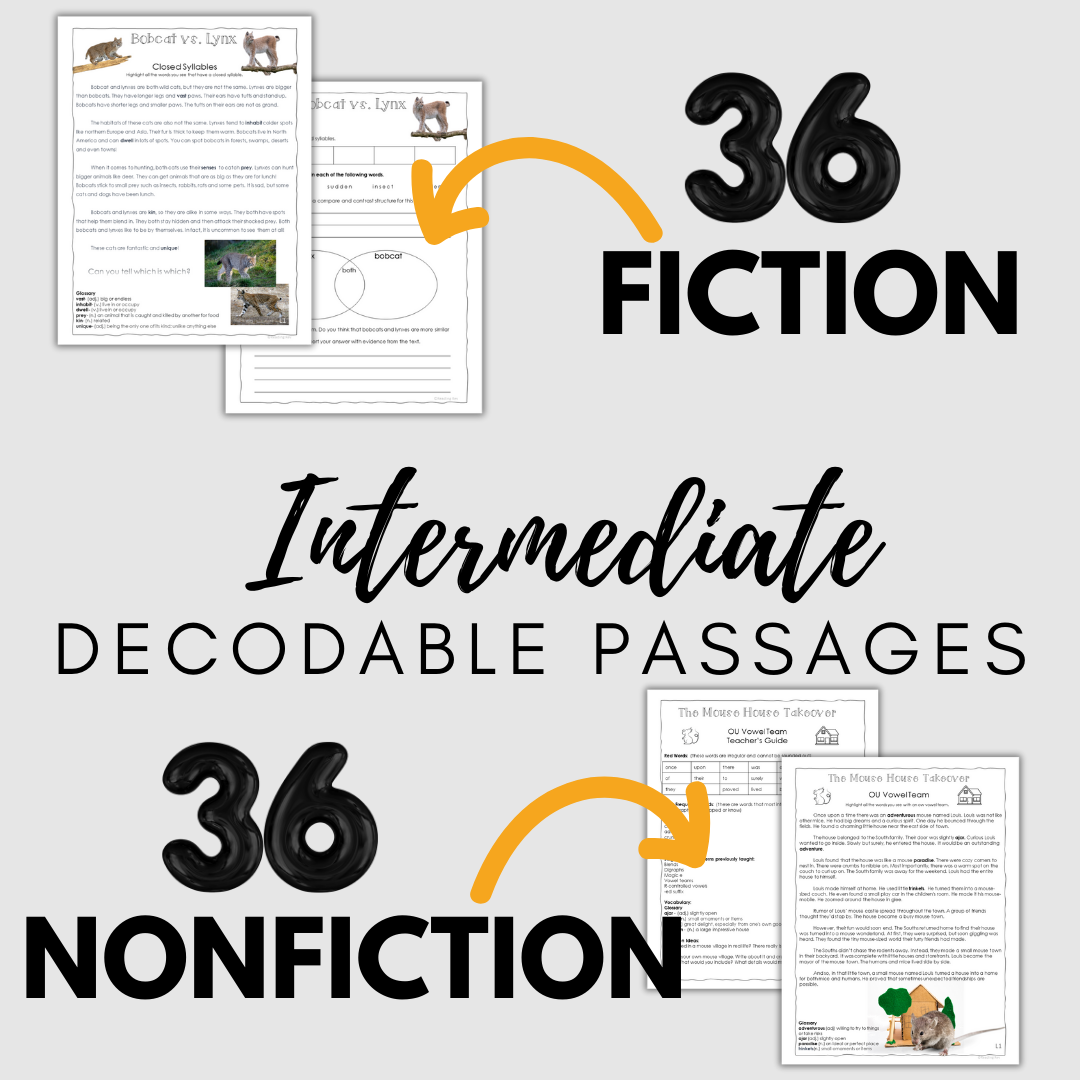Decodable Texts & Intermediate Students
Decodable texts have been a buzz in literacy eduacation the last few years, and they should be! For too long educators used predictable texts and leveled readers that did not reinforce the foundational skills of reading. In fact, they taught early readers some very harmful habits.
So what is a decodable text and for whom should it be used?
Simply put, a text is decodable if the child has been taught all the patterns that appear in the text. So, a decodable text for a kindergartener is going to be very different than a decoable text is for a 3rd grader. Sometimes decodables are called controlled texts because the author is controlling the patterns in the words written. Whenever someone says, “that is (or is not) a decodable,” the question that has to be ask is, “has the child been taught all the patterns needed to decode those words? Using a scope and sequence is helpful when matching taught skills and decodable texts.
Decodable texts should be used with emergent readers because they allow students to use sound-symbol decoding as the primary tool for figuring out the words! We do not want students to rely on picture clues or high-frequency, predictable words. These simple, decodable texts are a vital component of teaching reading at the most basic level. Students only see patterns that they have been explicitly taught. (Side note- These early readers still need to be exposed to rich plots, interesting characters, fascinating non-fiction, and robust vocabulary through read alouds. Students then get the best of both worlds.)
However, it gets a little stickier past first and second grade. The very simple decodable books feel babyish and older students often resist. And, controlled texts are, well… harder to control for a class of diverse learners.
So, how do you use decodable texts with intermediate students?
All kinds of questions come in to play.
• What if students have previously been exposed to patterns found later in the sequence? Can those patterns be used in a controlled text?
• Can high-frequency words, like people and dinosaur, be used knowing that most students have them orthographically mapped (known automatically because the phonetic, graphic, and meaning has been learned and effort decoding is no longer needed)?
• What level of decodability is necessary for student success?
• How can a text be high-interest, authentic, and engaging enough that older students will want to read it, while still being skill/pattern-based?
The answers:
• The primary purpose of intermediate decodable texts is for a student to see the connection between the phonics pattern they are learning and real reading.
• By 3rd grade, most students have been exposed to high frequency words and have a fair amount of orthographically mapped words.
• So, while helpful, not every word of a text needs to be decodable. Know Better, Do Better. Teaching the Foundations So Every Child Can Read, addresses this issue. It is stated that instead of focusing on 100% decodablility in later years, do the flowing things (Liben and Liben, 2019):
• Devote enough time for students to gain the access they need to reinforce the skill or pattern.
• Include comprehension questions so children learn they’re supposed to think about and make sense of what they read.
• Provide support for any vocabulary that a student might not know (both for decoding and meaning-making).
• Mine the decodable reader for all it might have to offer, including fluency practice and background knowledge.
It is important to find decodable books or texts that fit the needs of your students! Giving diagnostic assessments will give you insight into what patterns your students have mastered at the single-syllable and multisyllabic level and what they need to be taught. This will help you find the right decodable for your student. If a student is an emergent reader and working at the single-syllable level, find decodable texts that are age-appropriate at that level. If you student can read single syllable words in a pattern, but not multisyllabic words, find pattern-based or decodable texts that focus on longer words. The focus of the decodable text should be to reinforce the specific pattern being taught. It may not be perfect.
A good way to check to see if a passage is the right fit for a student is to do a one-minute read.
Use texts that are at the child instructional level. The instructional level is a text that can be read with 90-94% accuracy on the first read. The child is not yet at the independent level (95% or higher accuracy), but has been taught the skills and patterns necessary to be able to access the text with some assistence. If a student reads less than 90% of the words accurately, the text is at their frustrational level and too difficult. In this case, more instruction at the word and sentence level is necessary and a lower-level decodable text is needed.
Reading Rev has created 72 decodable, skill-based passages just for intermediate students!
The passages were written for students who are working on multisyllabic words. They are high-interest and age-appropriate. A fiction and nonfiction passage is included for each of the 36 phonetic patterns in the Reading Rev Scope and Sequence.
Two levels of each passage are provided to help navigate differentiation with diverse, intermediate learners. The levels are marked in the lower right-hand corner of each passage. Level 1 (L1) is Lexile Level 410-600 and only has previously-taught phonics patterns. Level 2 (L2) indicates a 610-800 Lexile Level. If a student reads the L1 passages with greater than 94% accuracy, they should use the L2 passage. These students don’t necessarily need the texts for decodablililty, but the passages can be used to foster fluency, vocabulary, comprehension, and will help students internalize the phonetic pattern.
The Reading Rev Teacher Talk Manual breaks it all down:
The passages are great for highlighting, rereading, and home proactice, but sometimes you just need a book in your hand! These are our favorite decodable books to use with intermediate students:
Leave a comment and share your wins with using decodable texts with intermediate students! We’d also love to hear about your favorite resources!
